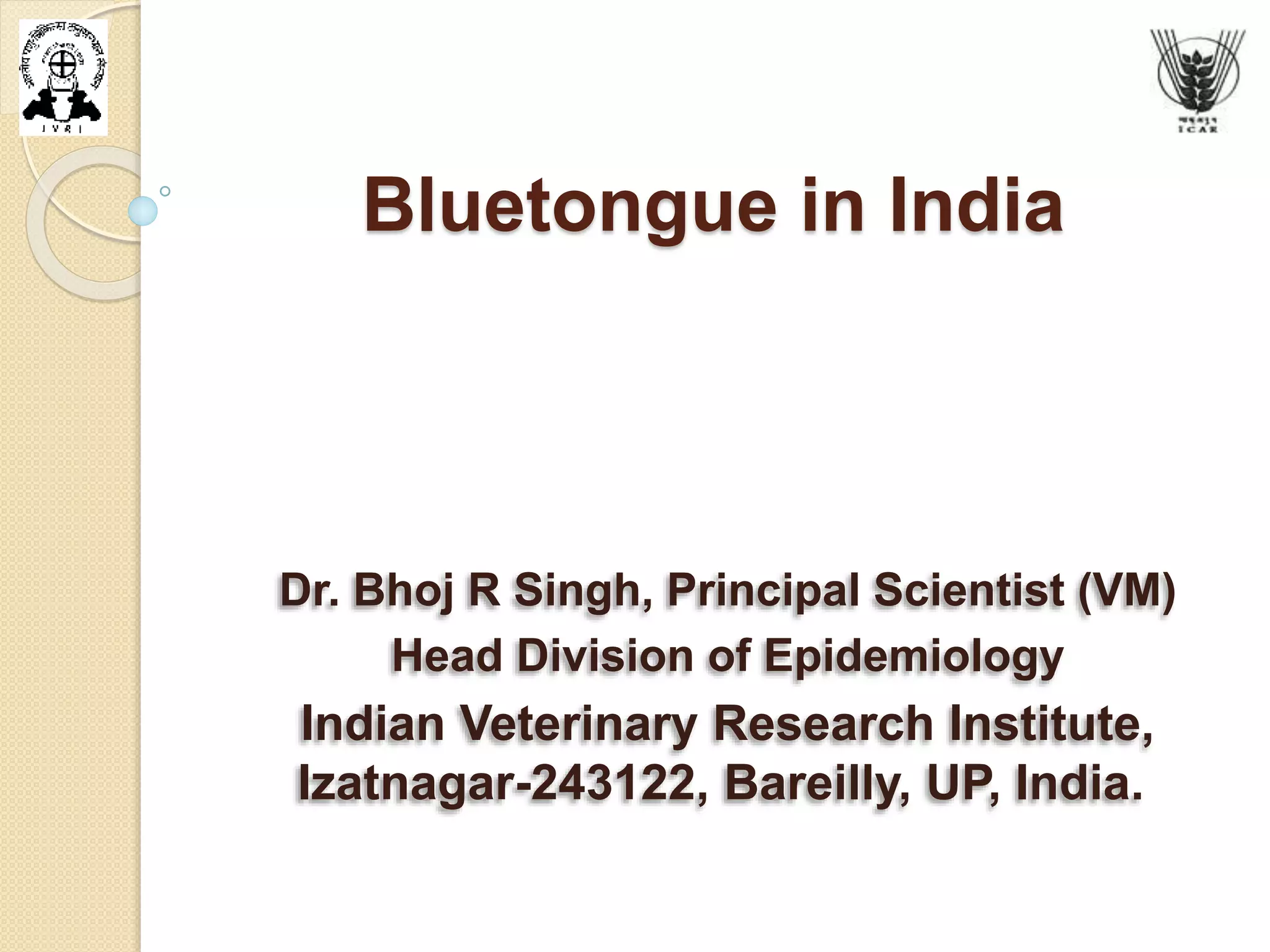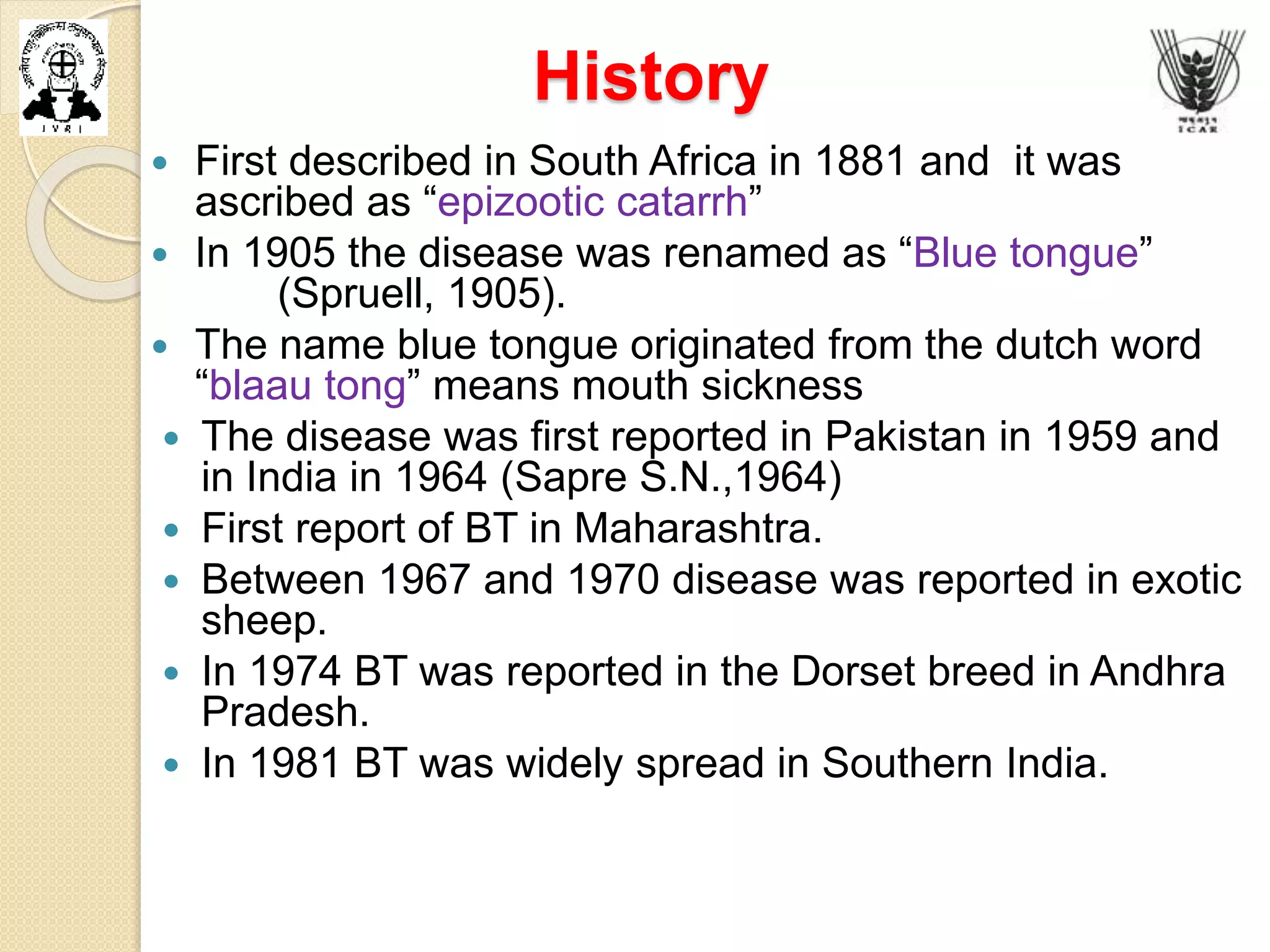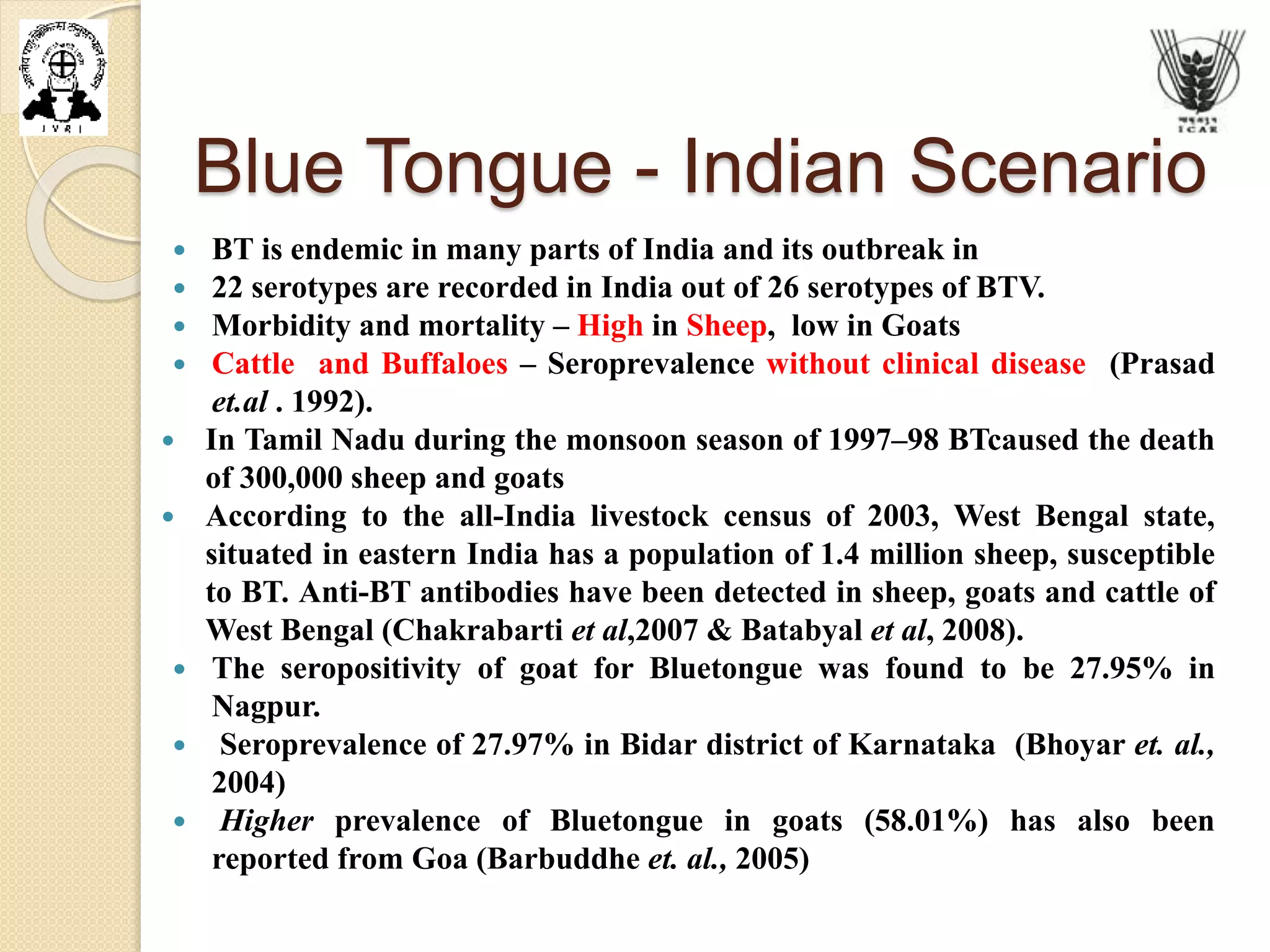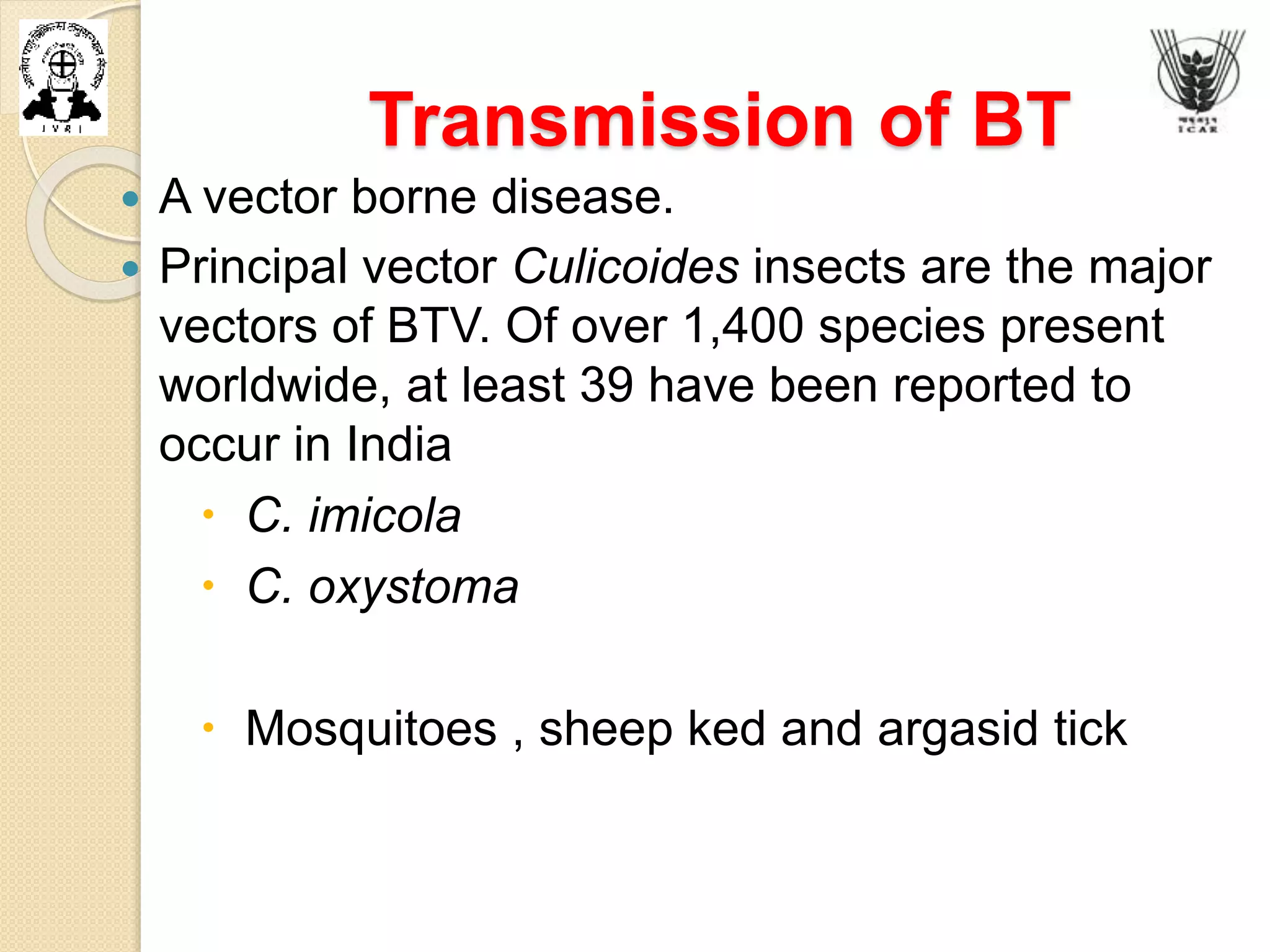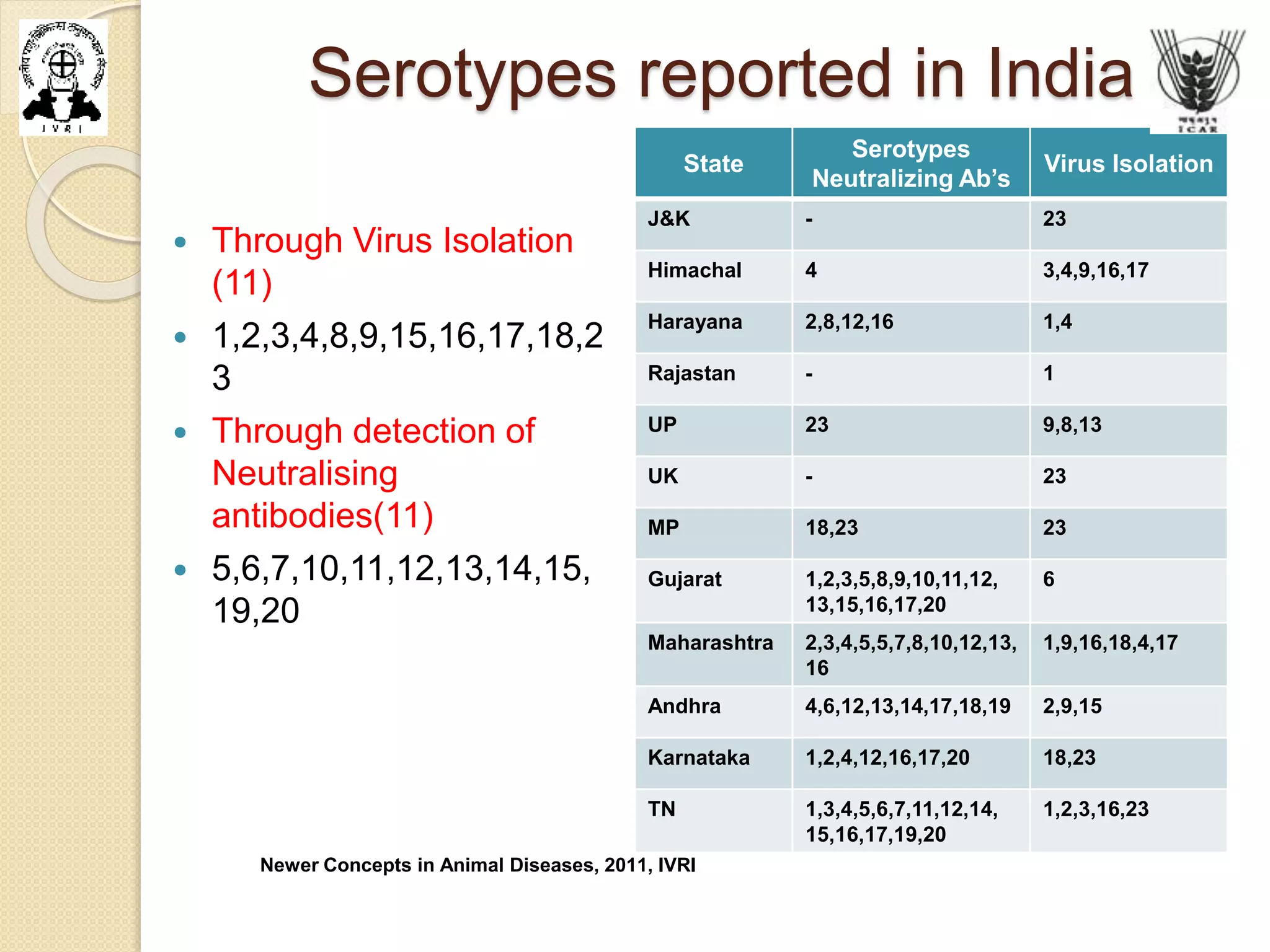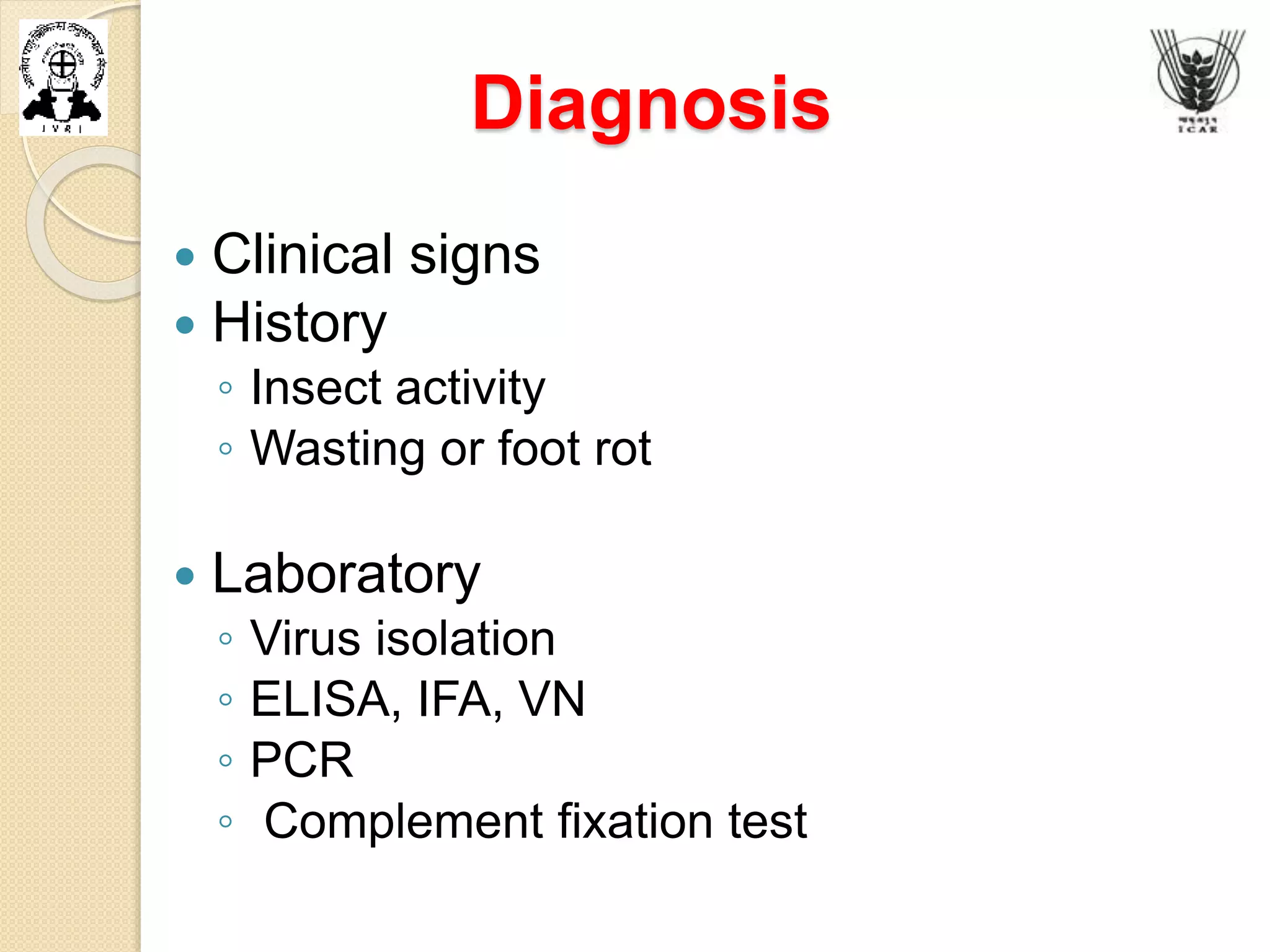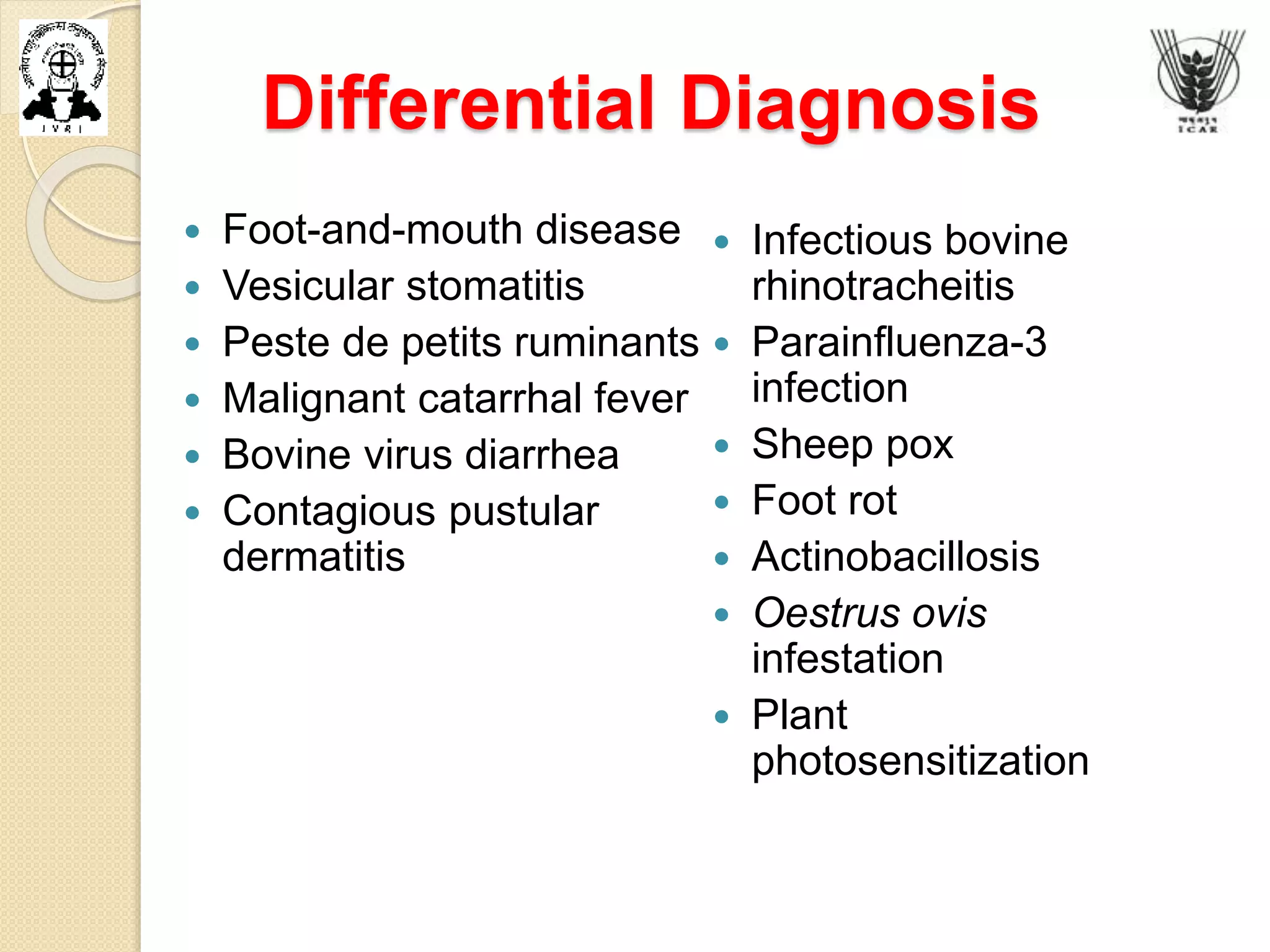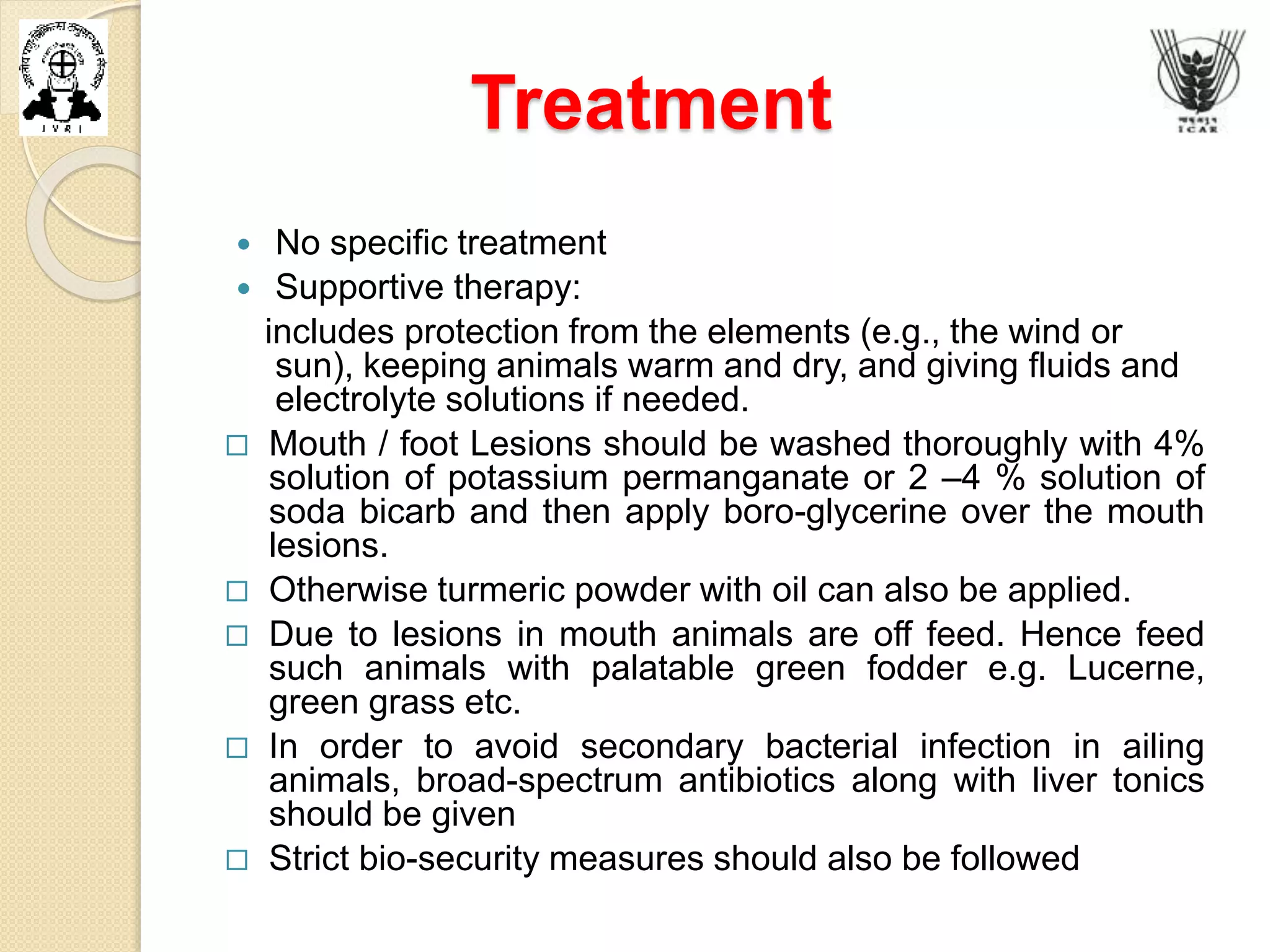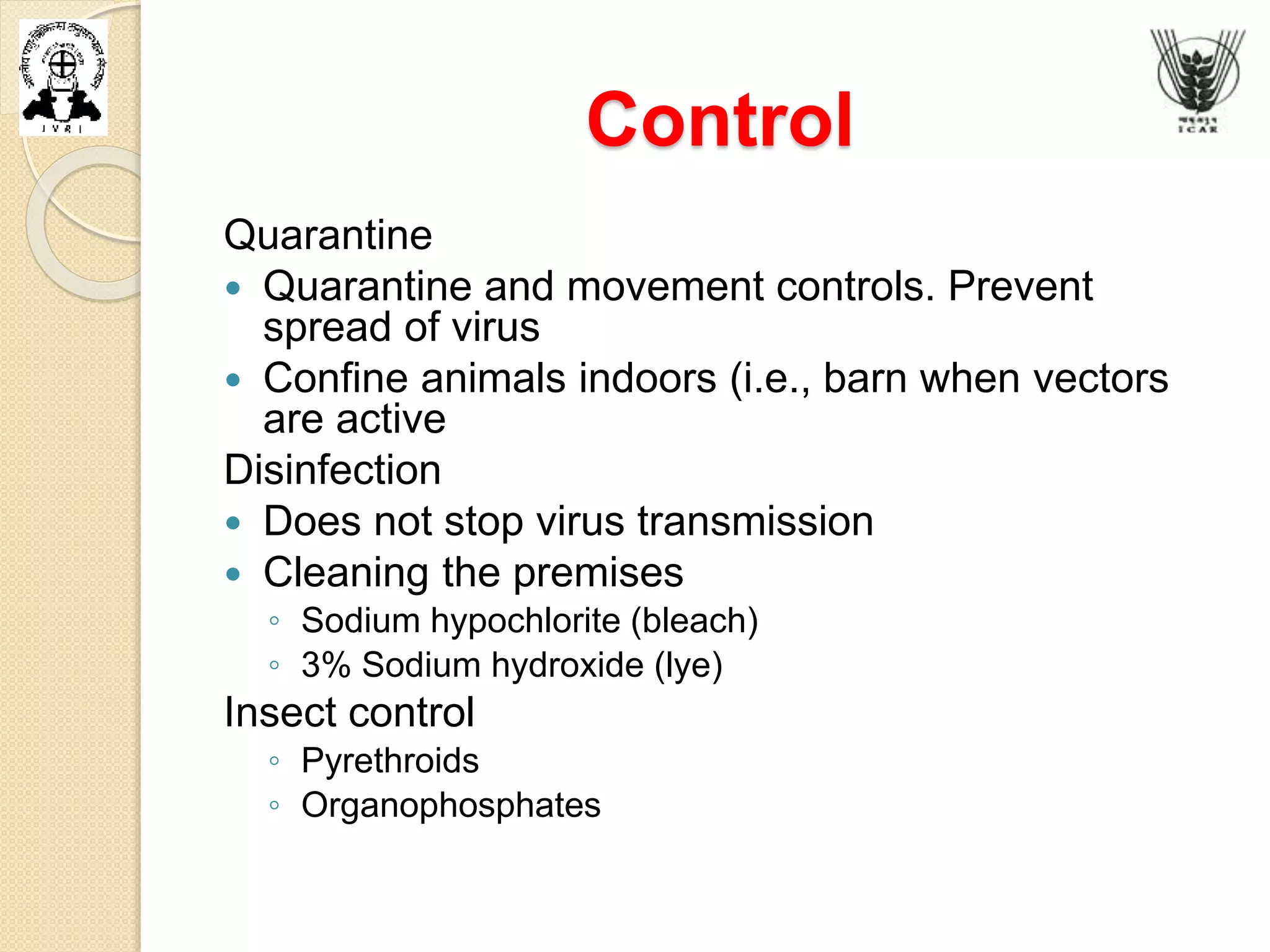Bluetongue is a non-contagious, insect-borne viral disease primarily affecting sheep, with 22 of 26 serotypes reported in India. Significant outbreaks have occurred, particularly during monsoon seasons, leading to high morbidity and mortality rates in sheep while other ruminants usually remain subclinical. Control measures include vaccination, vector management, and improved veterinary care, though challenges persist due to various environmental and economic factors.
